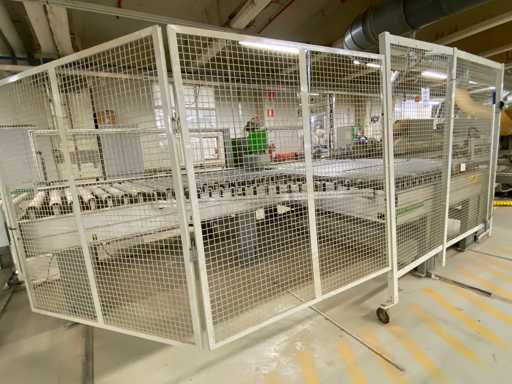Turning Stations
Panel turning stations & more for woodworking on both sides
Explanation of the term "turning station"
A turning station is a part of an assembly line. It is used to turn mass produced products around, which enables the products to be processed on both sides. It is used, for example, to effectively implement notches, holes or thread fittings.
Areas of application of turning stations
Part of an assembly line
Used to turn mass produced products around
Applied in all sectors
Quality Great offers Personalized Turning stations are applied in all sectors: food industry; furniture manufacturing; metalworking; electronics; and the building of complex products. The advantage is that turning stations allow for continuous and interruption-free processing. Monotone tasks with particularly heavy products can be undertaken using these machines. The disadvantage of a turning station is that it needs to be built with a shield.
Construction of a turning station
Turning stations consist of very complicated mechanics. The product is transported to a defined position and then rotated. Turning stations are available in a variety of types and constructions. Many turning stations work continuously and only require one rotating roller and a gripping device. Others contain a number of different guides, rails, stops and sensors. Complex and bulky products (e.g. windows) can be turned with these stations for further processing. Turning stations can be mechanically, electrically, pneumatically, or in the case of particularly heavy products, hydraulically operated. Turning stations are commonly designed to specifically fit the requirements of the assembly line where they will be integrated.
Working with a turning station
Turning stations are often fully automatic. They are usually equipped with an automatic guiding system. Even the transportation of the turned products can be undertaken without human intervention. Turning stations require a lot of supervision. Modern turning stations are equipped with a comprehensive sensor system that set of an alarm when the process is interrupted. An interruption usually manifests itself along one of the emergency stops of the machine, and then moves throughout the entire assembly line. Therefore, trained and qualified industrial mechanics should be available when turning stations are in operation. Even the programming of turning stations should be left to qualified workers. Turning stations need to be regularly maintained, which includes degreasing the movable components. Maintenance and cleaning is particularly important in the production sectors, where there is usually a large amount of chipping and dust. Dust from chipboards is especially important to watch out for, as they usually contain a high amount of binding agent.
Suppliers of turning stations
The buyers should be informed about the history of each specific machine. First it is important to note whether the machine is suited to undertake the required tasks needed by the buyer. Established manufacturers of turning stations are MULITITEC, URBAN, VENJAKOB, WEINIG, WEGOMA and BARGSTEDT.

